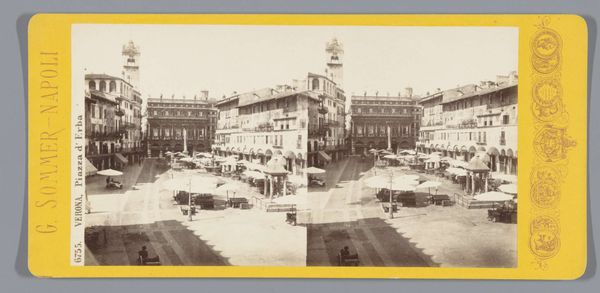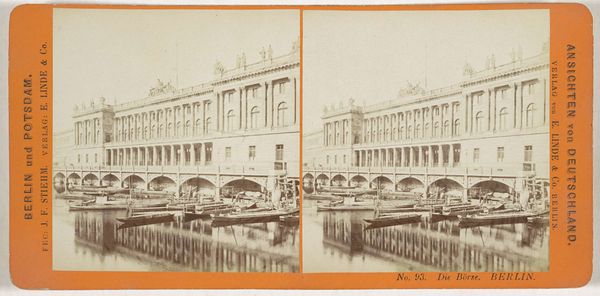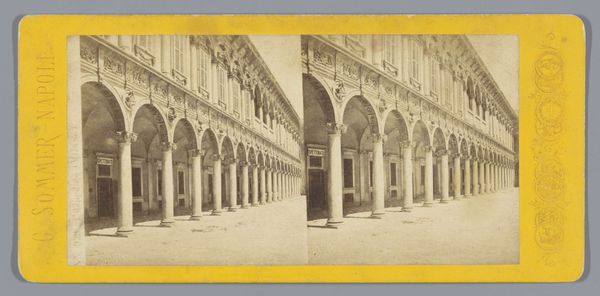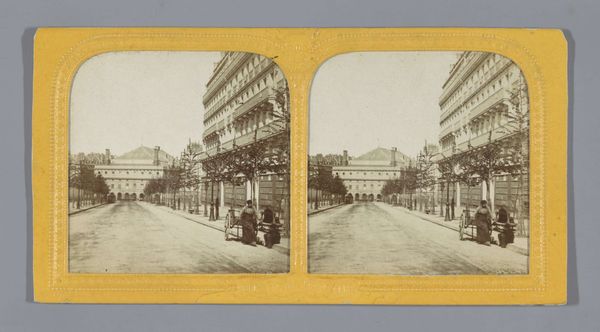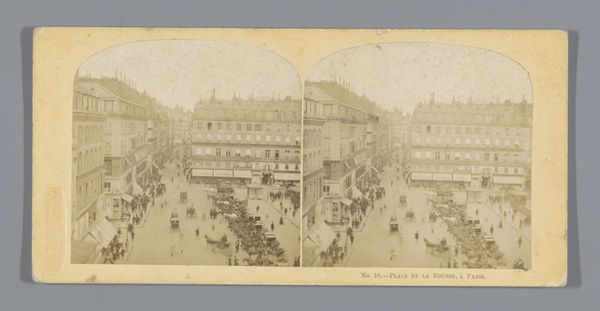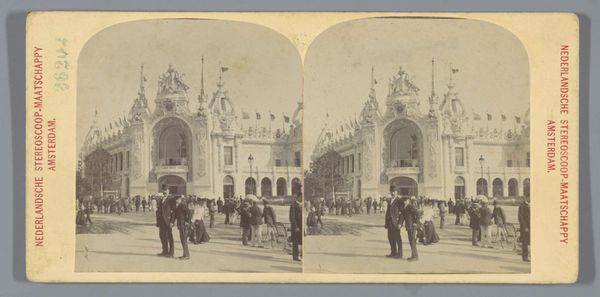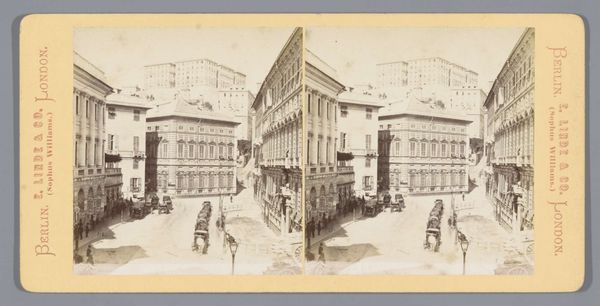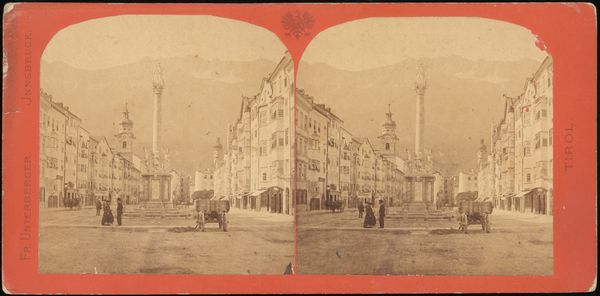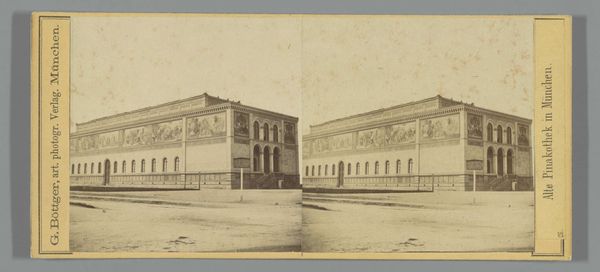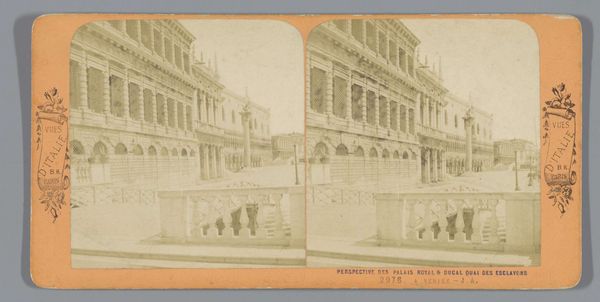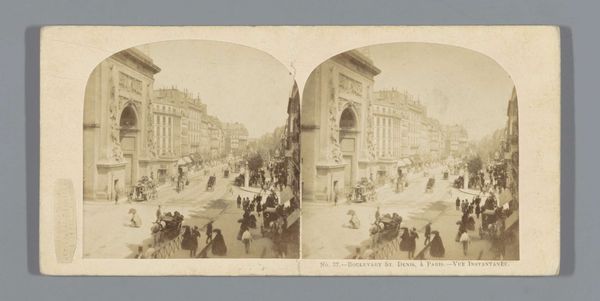
Place Vendôme met de restanten van de Colonne Vendôme tijdens de Commune van Parijs in 1871 1871
0:00
0:00
print, photography, gelatin-silver-print
#
16_19th-century
# print
#
photography
#
gelatin-silver-print
#
cityscape
#
history-painting
#
realism
Dimensions: height 87 mm, width 173 mm
Copyright: Rijks Museum: Open Domain
Curator: Here we have Charles Dauvois’ photograph, “Place Vendôme with the Remains of the Vendôme Column during the Paris Commune in 1871”. Editor: Whoa. That’s… a real gut punch, isn’t it? All that classical architecture in the background, looking almost indifferent to the… the rubble in the foreground. Curator: Indeed. Dauvois captured this gelatin-silver print amidst the ruins of the Vendôme Column, destroyed during the Paris Commune. It serves as both historical document and a statement about shifting power structures. Editor: Right? You've got this very bourgeois backdrop—elegant buildings, orderly facades, but then this raw, messy destruction right in the center. Almost feels staged, in a theatrical sort of way. All those little figures, frozen. Are they watching, complicit, or horrified? Curator: It’s crucial to consider the social context: The Commune, a radical socialist government, toppled the column, viewing it as a symbol of Bonapartism and imperial ambition. Dauvois' work immortalizes their act of iconoclasm. The materials—the broken stone and metal, were products of specific labor and symbolized contested authority. Editor: See, that's fascinating because it highlights the temporality of even the most bombastic symbols. Like, whoa—art and power are not immutable, especially when created to celebrate authoritarianism, like that phallic monument of masculine achievement, a.k.a the column that stood there. Now rubble... Curator: The photographic print, a relatively new medium at the time, allowed for a democratization of imagery and information. These gelatin-silver prints circulated widely, disseminating alternative viewpoints on the events transpiring. It served as a counter-narrative to official reports. Editor: Totally. And even just formally, there’s a contrast. The detail in those buildings versus the formless pile. It kind of underscores that idea about one system of power replacing another… through destruction. Though it still is kind of picturesque even through all the carnage... Curator: Yes, while visually striking, its true weight lies in capturing a pivotal, politically charged moment. The production, consumption, and afterlife of images like this speak volumes about the relationship between art, history, and social memory. Editor: Totally transformed my idea of the square now—next time I pass by I won’t only be looking at those perfect rows of windows but at what stood there, at what humans destroyed, and what symbols actually represent. Curator: It offers valuable insights into that time.
Comments
No comments
Be the first to comment and join the conversation on the ultimate creative platform.
